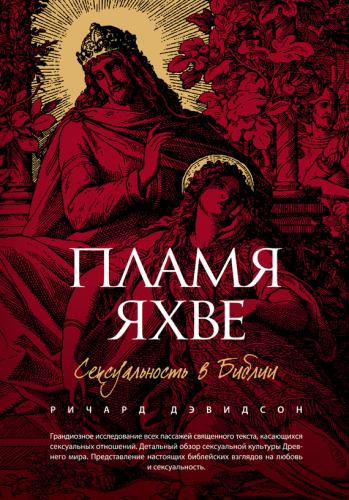<p>802</p>
Еще четверть века назад о статусе женщин в ВЗ писали очень мало. Однако уже к рубежу веков появилось редкостное изобилие штудий (в основном, феминистских). Обзор (с библиографией) положения женщин в Библии с феминистской точки зрения см. особенно в WS. Подписанные статьи в этом классическом справочнике по женским персонажам Библии будут указываться далее в примечаниях лишь в случаях цитат из них; в остальном они предполагаются по умолчанию. Ср. Bellis, Helpmates, Harlots, and Heroes; Evans, Woman in the Bible; idem, “Women,” DOTP 897–904; Mayer I.Gruber, Women in the Biblical World: A Study Guide (American Theological Library Association Bibliography Series 38; Lanham, Md.: Scarecrow, 1995); Frymer-Kensky, Reading the Women of the Bible; Lillian R.Klein, From Deborah to Esther: Sexual Politics in the Hebrew Bible (Minneapolis: Fortress, 2003); Irene Nowell, Women in the Old Testament (Collegeville, Minn.: Liturgical Press, 1997); Katharine Doob Sakenfeld, Just Wives? Stories of Power and Survival in the Old Testament and Today (Louisville: Westminster/John Knox, 2003); Luise Schottroff&MarieTheres Wacker, eds., Kompendium feministische Bibelauslegung (Gütersloh: Christian Kaiser/Gütersloher Verlagshaus, 1998). Типичный сборник авторитетный статей, преимущественно феминистских, по данной теме за последние 25 лет, см. в: Alice Bach, ed., Women in the Hebrew Bible: A Reader (New York: Routledge, 1999); см. также обширную библиографию по феминистской экзегезе, сс. 520–532. Другие значимые феминистские труды можно найти в серии Feminist Companion to the Bible, 2nd series, издаваемой издательством Sheffield Academic Press; см. также WBC, а с точки зрения евангельского христианского феминизма – Catherine Clark Kroeger&Mary J.Evans, eds., The IVP Women’s Bible Commentary (Downers Grove, Ill.: InterVarsity, 2002). Есть прекрасные исследования, написанные мужчинами: Jon L.Berquist, Reclaiming Her Story: The Witness of Women in the Old Testament (St. Louis: Chalice, 1992); Trevor Dennis, Sarah Laughed: Women’s Voices in the Old Testament (Nashville: Abingdon, 1994); William E.Phipps, Assertive Biblical Women (CWS 128; Westport, Conn.: Greenwood, 1992). Обзор истории докритической интерпретации женщин в ВЗ см. в: Thomas L.Thompson, Writing the Wrongs: Women of the Old Testament among Biblical Commentators from Philo through the Reformation (OSHT; Oxford: Oxford University Press, 2001). Обзор библейского повествования о наиболее значимых женщинах (с евангельской христианской точки зрения) см. в: Jo Ann Davidson, “Women in Scripture: A Survey and Evaluation,” in Women in Ministry: Biblical and Historical Perspectives (ed. Nancy Vyhmeister; Berrien Springs, Mich.: Andrews University Press, 1998), 157–167; idem, “Modern Feminism”. (Я очень признателен ей за исследования и за интересные мысли, которыми она со мной делилась.) Далее в этой главе мы приведем наиболее ценные работы по конкретным женским персонажам Библии (не разделяя, однако, фундаментальных феминистских предпосылок касательно Писания, которые лежат в основе многих подобных трудов).
Относительно общих работ по статусу женщин в ВЗ см. библиографии и аннотации в: Anderson, “Mapping Feminist Biblical Criticism,” 21–44; Phyllis A.Bird, “Women in the Ancient Mediterranean World: Ancient Israel,” BR 39 (1994): 31–79; Gruber, Women in the Biblical World; Samuel Terrien, Till the Heart Sings: A Biblical Theology of Manhood and Womanhood (Philadelphia: Fortress, 1985), 233–235; Phyllis Trible, “Women in the Old Testament,” IDBSup 966. Среди основных дискуссий: Phyllis A.Bird, “Images of Women in the Old Testament,” in Religion and Sexism: Images of Woman in the Jewish and Christian Traditions (ed. Rosemary Radford Ruether; New York: Simon&Schuster, 1974), 41–88; idem, Missing Persons and Mistaken Identities: Women and Gender in Ancient Israel (OBT; Minneapolis: Fortress, 1997); Athalya Brenner, The Israelite Woman: Social Role and Literary Type in Biblical Narrative (Sheffield, Eng.: JSOT Press, 1985); Judy L.Brown, Women Ministers according to Scripture (Minneapolis: Christians for Biblical Equality, 1996), 93–108; Grace I.Emmerson, “Women in Ancient Israel,” in The World of Ancient Israel: Sociological, Anthropological, and Political Perspectives (ed. R.E.Clements; Cambridge: Cambridge University Press, 1989), 371–394; Andre LaCocque, The Feminine Unconventional: Four Subversive Figures in Israel’s Tradition (OBT; Minneapolis: Fortress, 1990), 7–20; Inger Ljung, Silence or Suppression: Attitudes towards Women in the Old Testament (Acta Universitatis Upsaliensis: Uppsala Women’s Studies A Women in Religion 2; Uppsala: S. Academiae Upsaliensis, 1989); Marsman, Women in Ugarit and Israel; Susan Niditch, “Portrayals of Women in the Hebrew Bible,” in Jewish Women in Historical Perspective (ed. Judith R.Baskin; Detroit: Wayne State Univers1ty Press, 1991), 25–42; Otwell, And Sarah Laughed, passim; Meyers, Discovering Eve, passim.
<p>803</p>
Относительно ярких примеров этого тезиса см. цитаты в: Otwell, And Sarah Laughed, 10. Среди более поздних исследований с подобными выводами: Paul Avis, Eros and the Sacred (Harrisburg, Pa.: Moorehouse, 1989); Mieke Bal, Lethal Love: Feminist Literary Readings of Biblical Love Stories (Bloomington: Indiana University Press, 1987); Brenner, The Israelite Woman; Evans, Woman in the Bible, 11–32; Esther Fuchs, Sexual Politics in the Biblical Narrative: Reading the Hebrew Bible as a Woman (JSOTSup 310; Sheffield, Eng.: Sheffield Academic Press: 2000); Kevin Harris, Sex, Ideology, and Religion: The Representation of Women in the Bible (Totowa, N.J.: Barnes&Noble, 1984); Meir Malul, Knowledge, Control, and Sex: Studies in Biblical Thought, Culture, and Worldview (Tel AvivJaffa: Archaeological Center, 2002); Shlomith Yaron, “The Politics of Sex-Woman’s Body as an Instrument for Achieving Man’s Aims,” OTE 1 5 (2002): 269–292; Gale A.Yee, Poor Banished Children of Eve: Woman as Evil in the Hebrew Bible (Minneapolis: Fortress, 2003).
